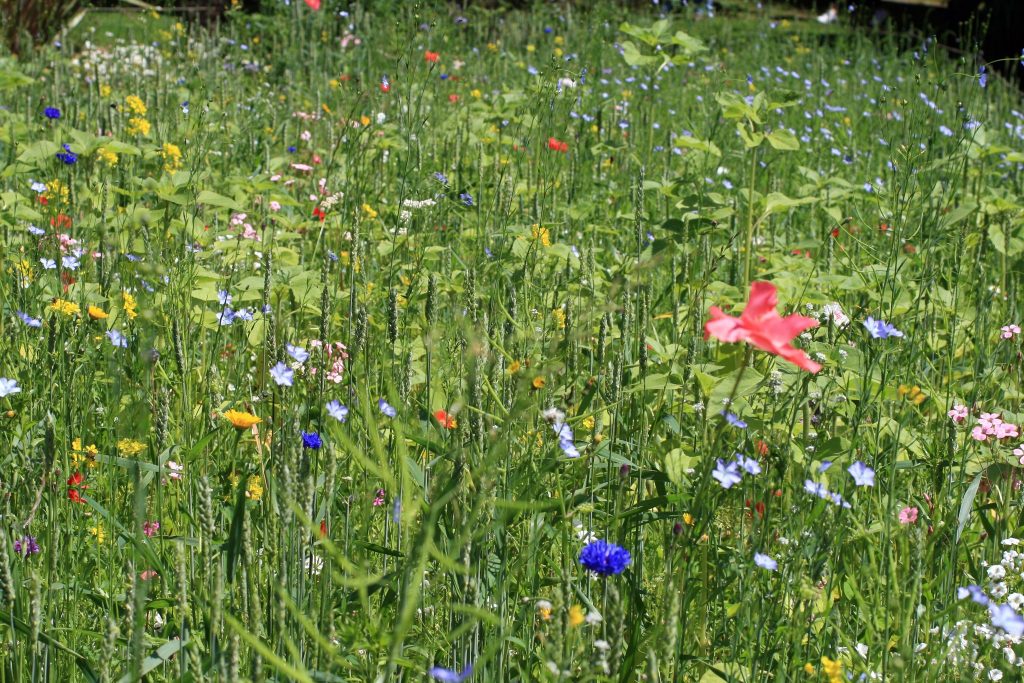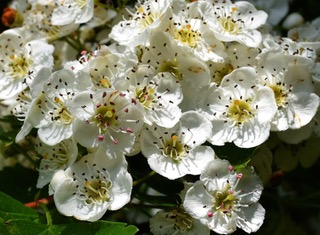
BBC News reports thousands of wildflowers are being planted in the Lake District as part of efforts to restore traditional hay meadows.
More than 5,500 are being plug planted during September at Boon Crag Farm on the shores of Coniston.

BBC News reports thousands of wildflowers are being planted in the Lake District as part of efforts to restore traditional hay meadows.
More than 5,500 are being plug planted during September at Boon Crag Farm on the shores of Coniston.
Good News Network reports that inspired by an innovative Chilean forest restoration effort, the English town of Lewes is enlisting the help of dog walkers to rewild a local nature reserve.
Heavily degraded by foot traffic, the project co-ops dogs’ tendency to run about in the woods to spread wildflower seed from saddlebags strapped to a harness around the dog’s abdomen.
The Times reports five species of wildflower native to Britain are officially classed as injurious under the 1959 Weeds Act, meaning that they are considered able to cause harm and landowners can be ordered to control their spread. However, a study has found that three of the weeds — ragwort (Jacobaea vulgaris) and two types of thistle (Cirsium arvense and C. vulgare) — are enormously popular with bees and other insects.

The Independent reports botanists most concerned by early sightings of hawthorn and buttercups.

The Guardian reports this little tree is barely twice my height yet it feeds so many. A grey squirrel pauses to snack on its daily run along the dry stone wall. Heaps of chewed berries on the ground show where mice have fed. In spring, hawthorn leaves are the first to emerge in the valley, followed by blossoms, plentiful in nectar and pollen for bees and hoverflies.
The BBC reports on cliffs above Bethesda that can only be reached with specialist mountaineering gear, grows one of the most endangered plants in the world. The exact location is a closely-guarded secret, but even sheep are unable to get to it, meaning they cannot eat the last of the Snowdonia Hawkweed. Their grazing has wiped the plant out in six of seven areas it once thrived. But from the verge of extinction, it is thought three plants spotted on a cliff in 2002 may have doubled their number.
“For some of the rarest plants, the only places they can sustain themselves is away from grazing and humanity, on the most inaccessible ledges and cliffs,” said horticulturist Robbie Backhall-Miles, who is trying to revive them.
The Guardian reports rewilding projects reveal rare species preserved in buried ancient wetlands. Botanists believe that this will lead to new plant discoveries; seeds can survive for centuries under layers of leaves and mud so once they are given water and exposed to sunlight the plants will grow.
Already, six plants of the endangered wetland flower grass-poly have been found at the edge of an old cattle-watering pond on the Heydon estate in north Norfolk. The species had not been seen in the county since the early 1900s.
THE GUARDIAN reports a rare species of orchid believed to have been extinct in the UK has been discovered on the roof of an office building in the City of London.
Serapias parviflora, also known as small-flowered tongue orchid, was found growing in the 11th-floor rooftop garden of the Japanese investment bank Nomura. It is usually found in the Mediterranean basin and the Atlantic coast of France, Spain and Portugal.
The Oserver reports the Egyptian birds are one of a number of foreign visitors, but why have these continental drifters fled north?
iNews reports once a staple of a 1970s garden, the pampas grass has burst back into fashion as a favourite of the Instagram generation. The plant’s dried fronds have made a comeback as the ultimate interiors accessory, with fans even resorting to stealing it from coastal beaches to get their style fix. But although pampas grass might be a trendy alternative to a vase of fresh flowers, it is no substitute for native grasses on UK coastal dunes, experts warned this week.